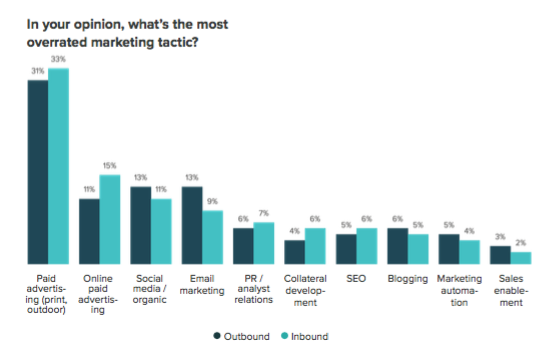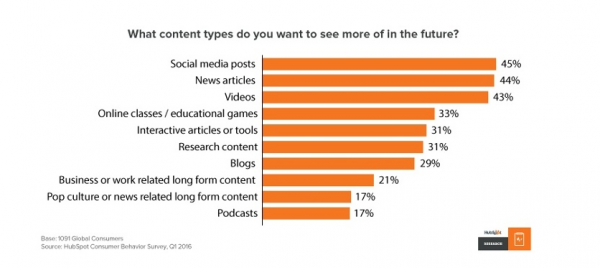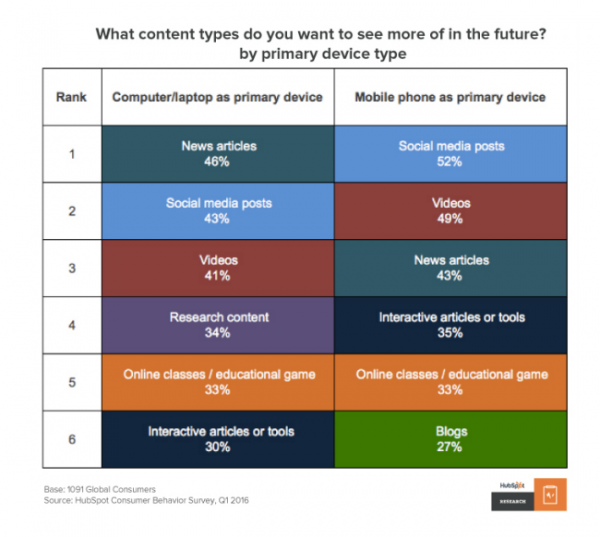
B2B Articles - September 19, 2016
To celebrate the release of its 128-page 2016 State of Inbound report, Hubspot organized a week of events related to the future of inbound marketing and sales. Here are some takeaways on the future of marketing and sales that Ironpaper gleaned from the trends discussions, with a few findings from the report for good measure.
“Inbound organizations were 4X more likely to rate their marketing strategy highly.” — State of Inbound (2016)
The overarching observation was that the way that people shop and buy is changing at an increasingly rapid pace. In fact, there is a disconnect today between how products are marketed and sold to people today and how consumers are shopping and buying, as HubSpot marketing VP Meghan Keaney Anderson and NextView Ventures’ Rob Go discussed in their Facebook live event.
 Source: State of Inbound 2016
Source: State of Inbound 2016
“70% of sales respondents gave marketing-generated leads a 3 out of 5 or less.” — State of Inbound (2016)
Discussion on Channels
New channels are key — particularly video stood out as an increasingly important channel. ClassPass CMO Joanna Lord suggested video was a channel that could be used to compel customers in every phase, but acknowledged it would depend on product and audience too. She also noted, video requires increasing sophistication. “You have to be doing it exceptionally well.”
Video is more memorable and more inspiring, agreed WordStream founder Larry Kim. He called for marketers to create video content for every stage in the funnel. Kim particularly recommended to first test content out in other formats and then take the top performing messages to amplify on video.
“56% of C-levels planning to add YouTube as a content channel, 46% with Facebook video, and 17% looking into Snapchat.” — State of Inbound (2016).
Yet, again, there are several other channels available on which to appeal to buyers, and reactions are mixed in terms of their efficacy.
 State of Inbound 2016
State of Inbound 2016
Discussion on Search
Search too is changing. As Anderson pointed out, Google processes more than 3 billion searches daily but Facebook is gaining ground now conducting up to 2 billion searches per day.
Yet WordStream founder Larry Kim argued that today it’s “less about [someone] stumbling on something in Google” and more a matter of customers expressing their preferences for brands, which requires establishing brand affiliation earlier and creating demand and awareness among people who don’t even know they have a need yet.
“If you're just waiting for people to search, you’re not really growing your market -- you're just harvesting the demand of people who are already looking to buy that thing in the first place.” — Larry Kim
Customers are less likely to seek out sales representative support — especially at the outset of their buying process. “Customers are far more informed; they are far more in control. So we need to create that bias connecting with them sooner,” said Kim.
The bias is informed by brand awareness, he said. The emphasis on brand was reiterated later in the week: “Brand is back,” said Go. “We now have a core of marketers that appreciate brand but can also flex that quantitative muscle.”
Discussion on Customer Relationships
Further, as Go put it, while there is increased fervor for marketing automation and customer relationship management software, the actual relationship with customers is being overlooked. The focus is on getting more customers, mostly top of the funnel, and not on giving customers the experiences that will make them really, really love the product.
Perhaps this view helps explain the disconnect found in Hubspot’s report over blogging. While only 29% of consumers wanted to see more blog content in the future, 60% of marketers said they are prioritizing blog posts this year.
At least Kim backed up the marketer approach to some degree. “The worst thing you could ever do is abandon your blog.” he said.
Becoming a brand publisher isn’t enough any longer, though, said Lord. It rests on smartly repurposing content, syndicating, and republishing in different formats.
 State of Inbound 2016
State of Inbound 2016
Lord further stressed the importance of personification and becoming the backdrop to a consumer’s life. “A lot of companies are thinking about the currency of time,” Lord said. “How can we earn the right to have more of their time?”
 State of Inbound 2016
State of Inbound 2016
Of course, as Go observed, there is no one single playbook for successful inbound marketing. “There is no silver bullet, just a bunch of lead bullets.” Ironpaper will continue to keep you current on the latest “bullet” technology, though, to help insure marketing and sales enablement success.
Sources
Hubspot. (2016). The State of Inbound 2016. www.stateofinbound.com
Keaney Anderson, M. (2016, Sept. 16). What content distribution channels are marketers adding in the next year? https://readthink.stfi.re/why-inbound-must-change-e7b50add8fba?sf=axyvwea#.qs8tw0o21

Tel 212-993-7809
Ironpaper ®
10 East 33rd Street
6th Floor
New York, NY 10016
Map
New York Agency
B2B marketing
B2B Content
Demand generation agency
Digital Marketing
Account-Based Marketing
ABM for SaaS
ABM for energy
Demand generation campaigns
Industry marketing
Privacy Policy
First-party data marketing
SaaS marketing
SEO for B2B
IoT Marketing
B2B Marketing for IoT Companies
HubSpot Agency
B2B Product Marketing
B2B Software Marketing
IoT go-to-market strategy
IT Marketing
HubSpot for ABM
ABM for AI companies
Technology Marketing
Marketing for IT Companies
ABM Campaigns
B2B lead generation
B2B Marketing and Growth Agency.
Grow your B2B business boldly. Ironpaper is a B2B marketing agency. We build growth engines for marketing and sales success. We drive demand generation campaigns, ABM programs, B2B content, sales enablement, qualified leads, and B2B marketing efforts.